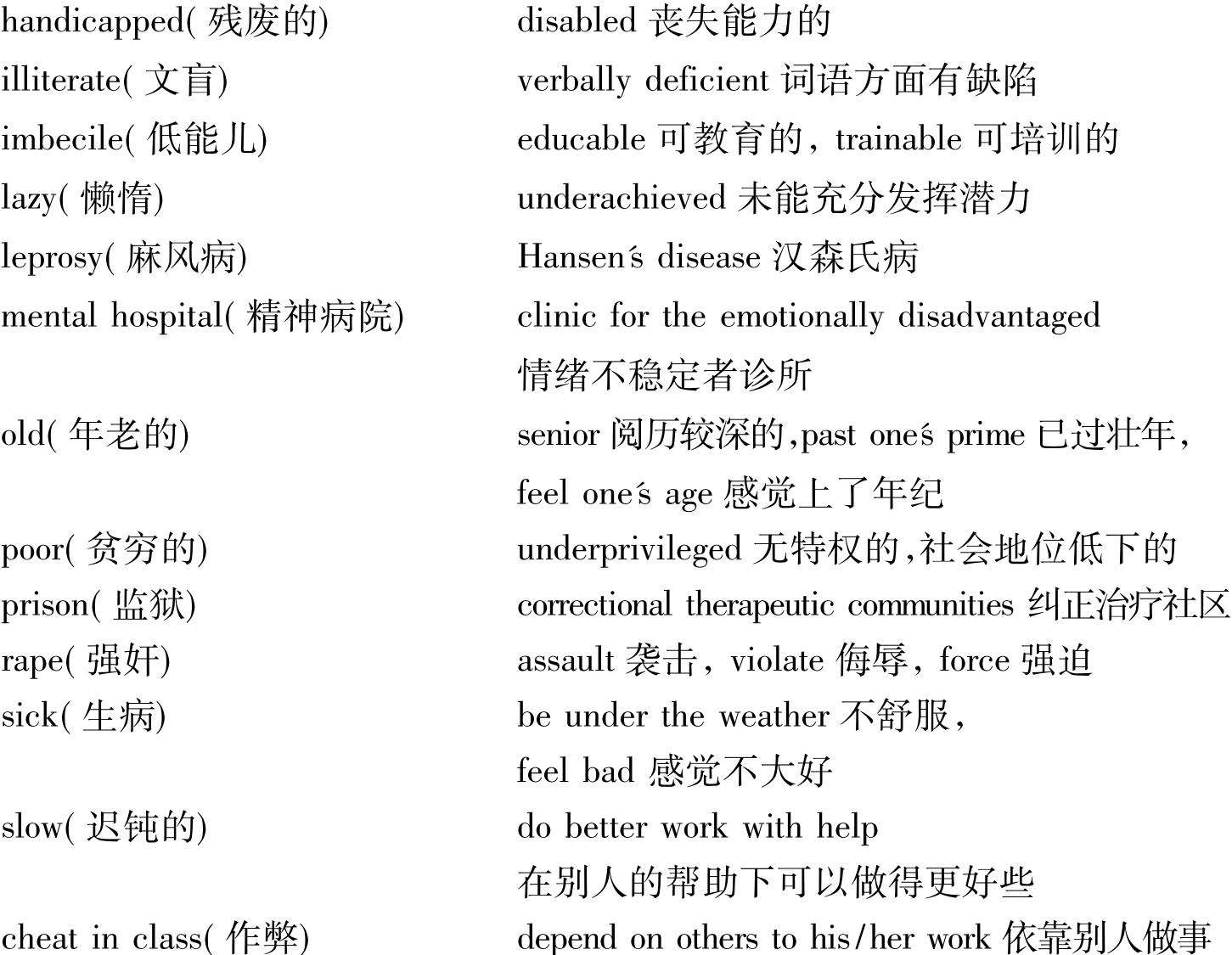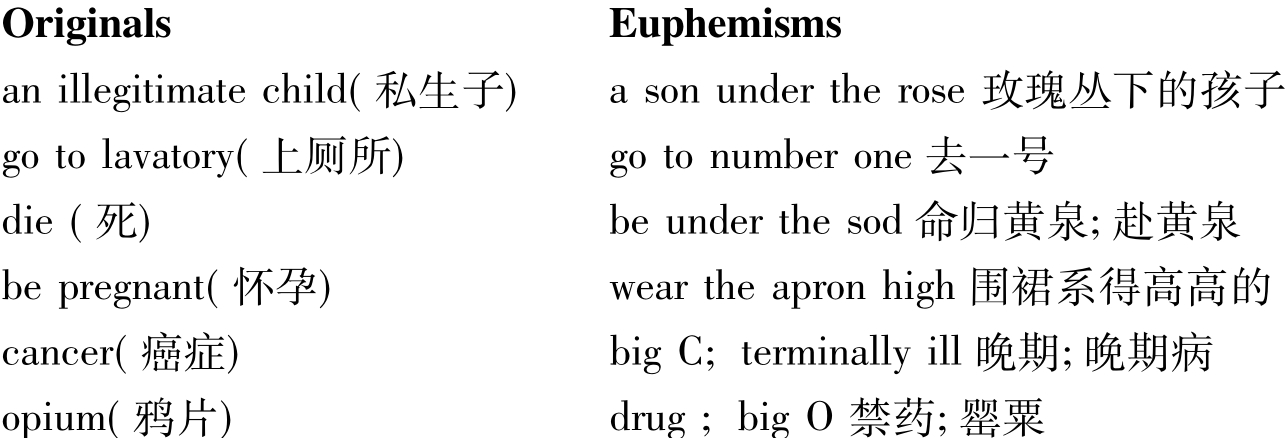4.6. 2 Methods of Translating Euphemisms委婉语的翻译方法
4.6. 2 Methods of Translating Euphemisms委婉语的翻译方法
1)Commendatory expression(褒义表达): Because of the nature that euphemisms are pleasant,polite or harmless sounding words or expressions are normally used to mask harsh,rude or infamous truths.As we know,some professions or jobs in the world stand in high social status,but some in a low position.For this reason people usually do not directly use these terms of jobs in low social position,and instead choose some other terms of professions in high social status in a commendatory way.When we translate them,we manage to avoid the harsh,rude or infamous truths in the original and render them by means of commendatory expressions.

2)Understated expression(含蓄表达): In any language,there are euphemisms and taboos.The former are the indirect references,and the later are direct ones.The both seem to be different but similar in form,and their meanings are closely related.If euphemisms are directly mentioned in writing or speech,those who say them may be regarded as impolite,rude,or uneducated.In order to avoid mentioning euphemisms directly,the understated translation is indeed needed in rendering.For example,people don't often say“go to the lavatory” (去厕所),“pass urine” (撒尿)or“defecate” (拉屎)in everyday communication,instead many euphemisms for them are used: washroom,bathroom,restroom,comfort station,powder room,ladies’ ,gents’ ,men's,WC,and toilet.


3)Image-rendering(形象表达): Image is the feature of euphemisms.It is the translator's task to show their images so as to embody the rhetorical effects of vividness and humor in euphemisms.
